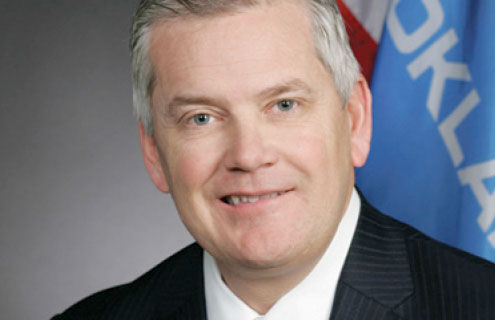Oklahoma Insurance Department
Oklahoma’s regulatory modernisation embraced innovative ideals to meet the needs of Oklahomans, says insurance commissioner John Doak
With strong competition in the market, what makes Oklahoma an attractive location in which to domicile?
The State of Oklahoma has modified its regulatory process to embrace best practices by providing greater efficiency and flexibility in developing the state as a premier captive domicile. Oklahoma is an attractive location because the state keeps costs low for captive owners through minimal fees, taxes, and related expenses.
Although Oklahoma has been a captive domicile for over a decade, the most compelling reason for captive owners and managers to consider the state as a potential domicile is our regulatory modernisation reforms. There are many structures available for formation, including sponsored and special purpose captives.
Oklahoma offers additional benefits, including premium tax caps, provisional licensure, two-phase funding for pure captives, and no required in-state board meetings, board members, or captive management. Our responsive and dedicated staff members are ready to help managers and owners with any questions and to explain the benefits they would enjoy by selecting Oklahoma.
We are excited about the changes made over the last few years and about the industry’s positive response to our efforts.
Was 2015 a successful year? How many captives did you license?
Yes, 2015 was a successful year as Oklahoma continued to experience strong interest and growth in our captive industry thanks to the modernisation reforms that went into effect in November 2013. During 2015, Oklahoma licensed 26 captives, bringing our year-end total to 73, and we have continued to increase that number as we entered the new year.
We expect this growth to continue as the industry increases its knowledge about Oklahoma as a strong, stable domicile.
What type of captives did you license? And from which sectors?
Oklahoma captives come from both in and out of state across a broad range of sectors. Our state has a strong history of understanding and supporting the needs of our vast energy sector, which encompasses unique insurance issues, but our captives today address many diverse insurance needs.
We currently regulate captives utilising several of the various forms available in our statutes, with a majority of owners choosing to operate pure captives.
What factors do you believe have contributed to Oklahoma’s success in the captive insurance market?
In 2013, we looked at modern trends and alternatives and then identified the best features available to captives from around the country. The regulatory modernisation we proposed embraced those innovative ideals that would allow us to meet the needs of Oklahomans and their companies in their home state by removing obstacles that drove business to other states to operate their captives.
By embracing a new way of conducting business from a regulatory perspective, we developed ourselves into a domicile that can meet the needs of a broad range of captive owners and managers well beyond the borders of Oklahoma.
The results are positive and evident through continued growth in the captive industry within Oklahoma.
Do you expect to see growth continue during 2016?
Yes, we are looking forward to continuing growth of Oklahoma as a domicile. From the strong growth that has followed changes in state law, we are also witnessing significant energy in the captive industry through the Oklahoma Captive Insurance Association.
The Oklahoma Captive Insurance Association was developed in the state to support the work of our captive industry and partners.
The hard work of the interested parties in our captive industry provides a wealth of expertise and information for the benefit of our captive owners, professionals and regulators.
Are there any regulation updates due in 2016?
We are in a period of regulatory stability while we monitor the success of our modernised statutes and regulations, but the quest for best practices is ongoing.
We are actively engaged in conversations at the national level regarding the regulation of captives, such as those occurring at the National Association of Insurance Commissioners and those regarding federal tax policies.
As we learn and the market responds to positive regulatory behaviour, we intend to be ever vigilant in modifying our regulatory system in the future to embrace best practices.





